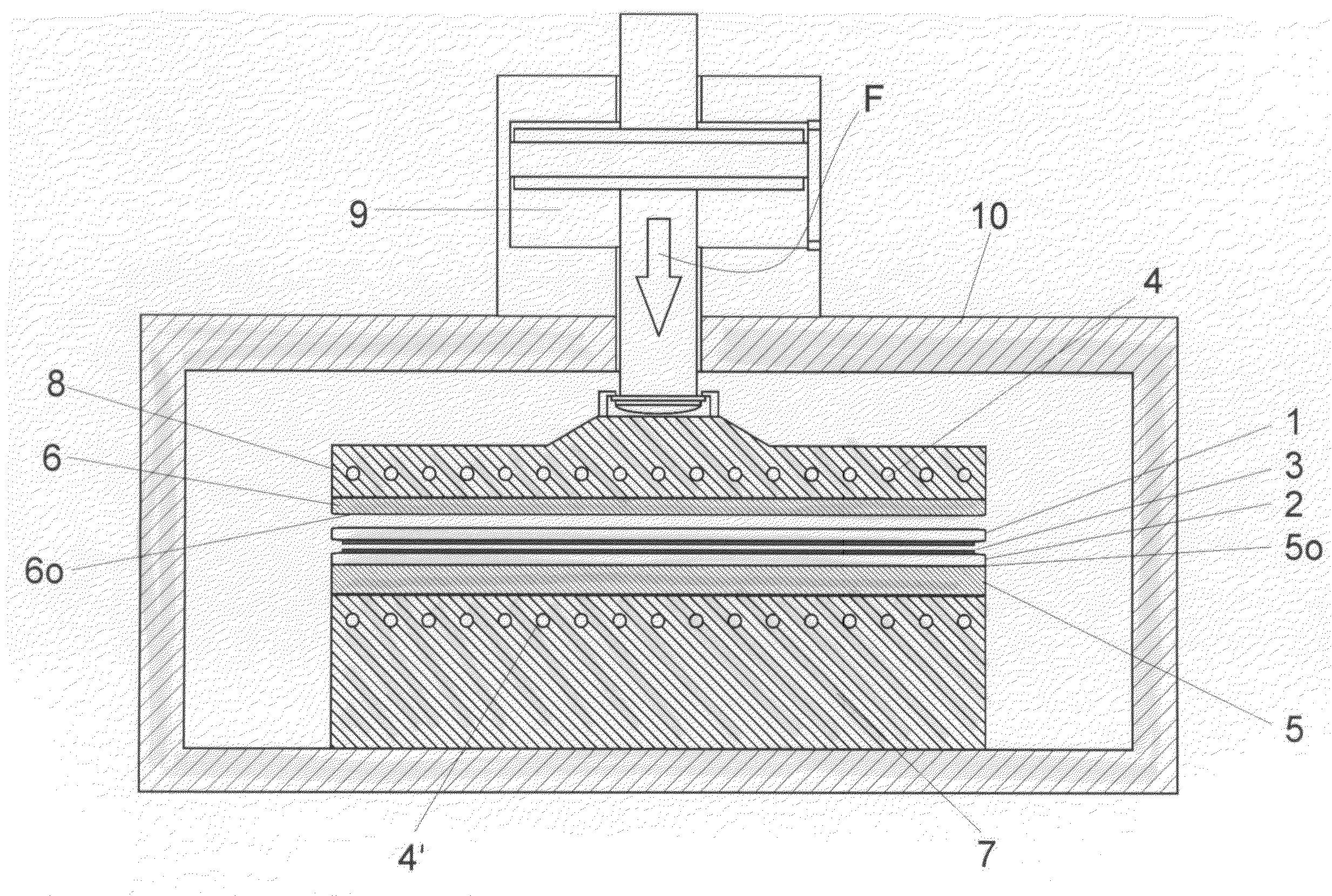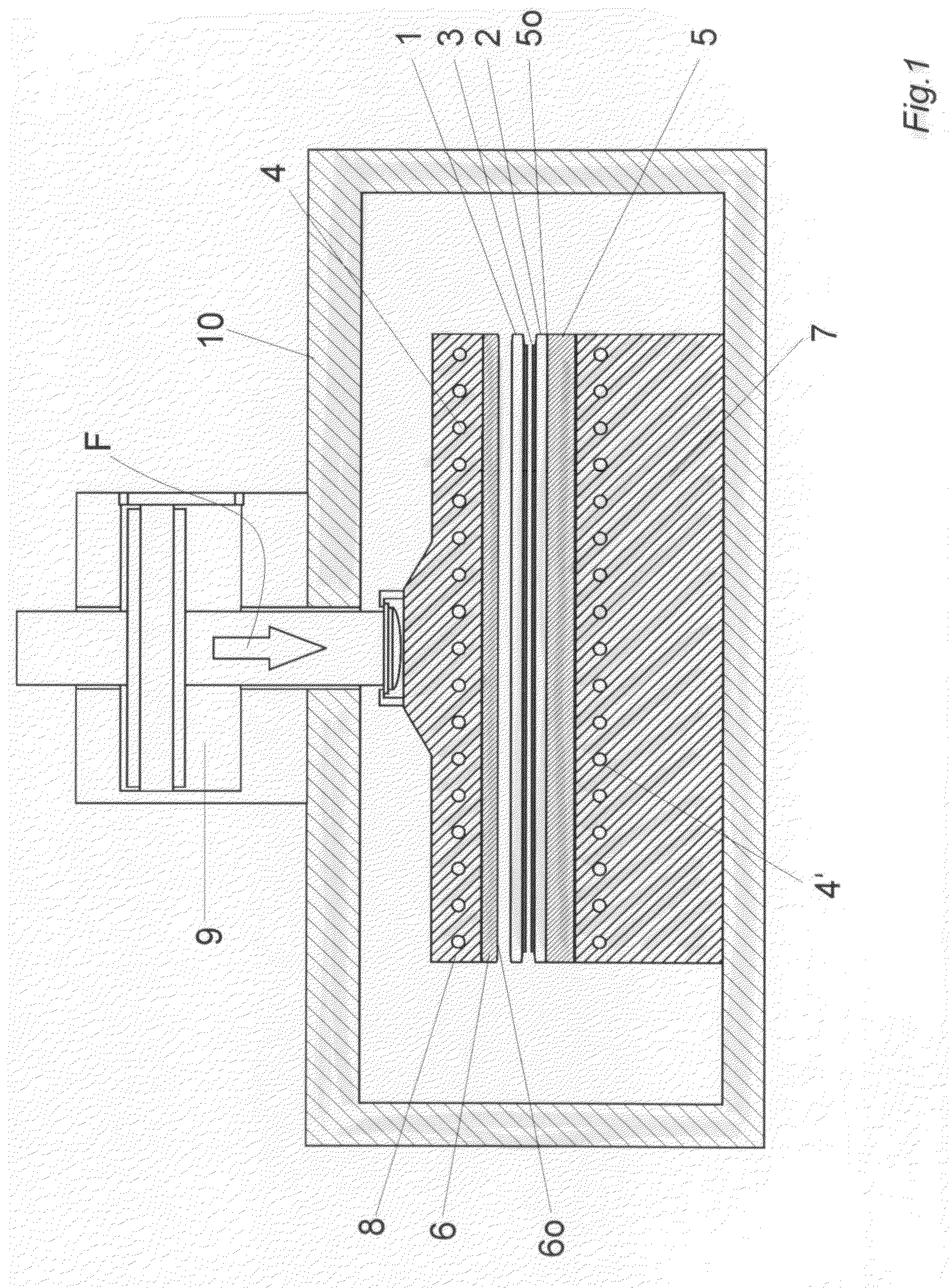Process and device for bonding wafers
a technology of bonding wafers and process, which is applied in the direction of lamination, paper/cardboard containers, containers, etc., can solve the problems of substrate damage, substrate contamination, distortion of the structure of the substrate and/or the m rang
- Summary
- Abstract
- Description
- Claims
- Application Information
AI Technical Summary
Benefits of technology
Problems solved by technology
Method used
Image
Examples
Embodiment Construction
[0031]The single FIGURE shows a process chamber 10 with an opening, not shown, for loading and unloading substrates 1 and 2 and further connections, not shown, required for the process, on the upper side of which is located an actuator 9 for charging the substrates 1 and 2 with a pressing force F.
[0032]The pressing force F is transferred via an upper heating means 8 with heating coils 4 and an upper pressure plate 6 to the substrate lying on top.
[0033]The corresponding counter-force is transferred via the heating means 7 located on the base of the process chamber 10 and the lower pressure plate 5 lying on the heating means 7 to the substrate 2 held on the lower pressure plate 5. The substrates 1, 2 are bonded here by a (an optional) bonding layer 3. The lower heating means 7 has heating coils 4′ for heating the lower substrate 2.
[0034]If the upper pressure plate 6 is constructed from plastic, the substrates are heated in the process chamber 10 to a maximum temperature below 300° C.,...
PUM
| Property | Measurement | Unit |
|---|---|---|
| Temperature | aaaaa | aaaaa |
| Temperature | aaaaa | aaaaa |
| Temperature | aaaaa | aaaaa |
Abstract
Description
Claims
Application Information
 Login to View More
Login to View More - R&D
- Intellectual Property
- Life Sciences
- Materials
- Tech Scout
- Unparalleled Data Quality
- Higher Quality Content
- 60% Fewer Hallucinations
Browse by: Latest US Patents, China's latest patents, Technical Efficacy Thesaurus, Application Domain, Technology Topic, Popular Technical Reports.
© 2025 PatSnap. All rights reserved.Legal|Privacy policy|Modern Slavery Act Transparency Statement|Sitemap|About US| Contact US: help@patsnap.com


